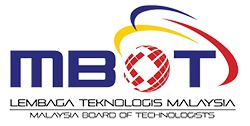Antibacterial Activity of Pyroligneous Extract from Rhizophora Apiculata against Escherichia Coli, Staphylococcus Aureus, and Salmonella Cholerasuis: New Insights on their Feasibility as a Natural Disinfectant
Keywords:
Pyroligneous extract, Bactericidal agent, Disinfectant, EN 1040, BiomassAbstract
The increasing number of varieties of infections, contaminations, and diseases caused by bacteria, even multidrug-resistant bacteria appear to become a critical issue. Besides, artificial chemical-based disinfectant also brings adverse effects to humans and animals. This study aims to investigate pyroligneous extract as the alternative green potential disinfectant. A quantitative suspension test (EN 1040) was used to evaluate the bactericidal activity. On the obtaining results, the bioprocess kinetics of different bacteria strains to pyroligneous extract-based disinfectants were further investigated. Also, the disinfectant’s physicochemical characteristics were analysed. This study resulted that the bioactivity reduction percentage and mean log reduction: Escherichia coli (ATCC 8739) (100%, 6), Staphylococcus aureus (ATCC 6538) (100%, 5.9243), and Salmonella cholerasuis (ATCC 10708) (100%, 5.9868) respectively. For bioprocess kinetics analysis, the specific reduction rate and halve rate: E.coli (2.7631, 3.9872), S.aureus (2.7282, 3.9368), and S.cholerasuis (2.7570, 3.9784) respectively. Physicochemical properties are acidic (pH 2.7), low density (1.0019 g.ml-1), and low viscosity liquid (10.6 cps). These findings showed that the ability of pyroligneous extract-based disinfectants to reduce the bacteria population with applied appropriately.





